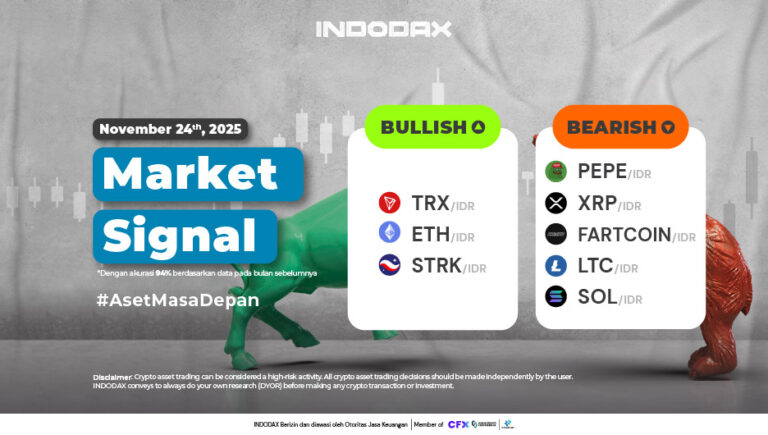Public blockchains are transparent. Private blockchains are closed. But what if the two could be combined?
This is Hybrid Blockchain, a combination of the power of open and closed systems. This technology provides elevation, allowing companies to determine which data is distributed to the public, and which remains private.
In an increasingly complex world, hybrid blockchain is the modern answer to the need for transparency and privacy at the same time. Let’s take a look at the following review.
What is Hybrid Blockchain?

Hybrid blockchain is a technology that combines two types of blockchains at once, namely public and private blockchains, in one integrated system.
This approach is designed to optimize the advantages of each, while minimizing their disadvantages.
On the one hand, public blockchains are known for their open and transparent nature, while private blockchains emphasize control and privacy. Hybrid blockchain bridges the two.
In this system, organizations have full control over how data is used and shared. They can determine which data will be stored privately, and which can be accessed by the public.
This provides high flexibility because not all information must be open, especially when it comes to sensitive matters such as customer data, finances, or medical information.
Hybrid blockchain also enables efficient and fast transaction processes through the use of private nodes, without neglecting the transparency aspect because public elements remain active in the network.
Thus, this system is able to present a balance between efficiency, security, and openness, as three things that can rarely be achieved simultaneously on one platform.
Due to its adaptive characteristics, hybrid blockchain is starting to be widely applied in various strategic sectors. In the financial sector, this technology is used to maintain data confidentiality while still complying with transparency regulations.
In the logistics and supply chain sector, hybrid blockchain helps track shipments in real-time while maintaining the integrity of internal information.
In fact, in healthcare and government, this system is a solution to manage critical data securely without sacrificing the necessary public access.
How Does Hybrid Blockchain Work?
Hybrid blockchain works by combining two main layers, namely private systems and public systems. Data and transactions are stored in both layers, with complementary functions.
In a hybrid network, private blockchain is used to run transactions and record sensitive data that can only be accessed by certain parties.
Meanwhile, public blockchain acts as a verification tool that ensures that data recorded on the private blockchain is valid and not manipulated.
When someone is given access to a hybrid blockchain platform, they can be fully involved in network activities. This user can view, make, and even change transactions, depending on the access rights they have.
However, the user’s identity remains confidential to other participants in the network. The identity will only be open to parties directly involved in the transaction.
To ensure the legitimacy of identities, companies typically implement a Know Your Customer (KYC) process before granting access.
For example, if two companies want to conduct a private business transaction, they can do so through a closed blockchain layer.
Once the transaction is completed and validated, the private system notifies the public blockchain that the transaction has taken place.
A digital record of the transaction is then recorded in a new block on the public blockchain, without revealing any sensitive details.
This way, all parties can see that a transaction has taken place, but the data within it remains private.
In practice, only certain nodes have full access to all the data in both layers. While some other nodes may only be able to read part of the information, depending on the authorization settings in place.
To regulate these interactions and access rights, the system uses smart contracts, which are automated programs that execute certain rules without third-party intervention.
One of the main strengths of hybrid blockchains is their ability to flexibly combine consensus mechanisms from public and private systems.
This keeps the network efficient, secure, and decentralized, while still meeting the need for privacy.
Also read related articles: Differences Between Layer 1 Blockchain, 2 Vs 3 & Their Advantages
Hybrid Blockchain Advantages
Hybrid blockchain technology offers an ideal combination of private system security and public system openness.
This combination creates a flexible and efficient solution, especially for organizations that require tight access control and transparency at scale. Here are some of its main advantages, including:
1. Can open some data to the public without sacrificing security
Hybrid systems allow certain information to be disseminated to the public blockchain for transparency, while keeping sensitive data safe in the private network.
This answers the need for open communication without sacrificing the protection of important information.
2. Gives full control over who can access what
Organizations have the flexibility to set detailed authorizations, both to read, verify, and modify transactions. User identities remain protected and only authorized parties can access certain data.
3. Suitable for businesses, institutions, and cross-party collaborative projects
With a customizable infrastructure, hybrid blockchain is ideal for collaboration between institutions that require a combination of internal confidentiality and external openness.
4. Efficient in terms of performance and more scalable than private blockchains
Transactions can be processed at high speed and low cost because private nodes work optimally without having to open the entire system to the public.
This makes hybrid blockchains lighter and more scalable than fully closed systems.
5. Supports audit and compliance while maintaining internal confidentiality
Records stored publicly can be used for audit purposes and regulatory compliance. Meanwhile, sensitive internal data remains on the private side and is protected from unauthorized external access.
Disadvantages of Hybrid Blockchain
Although it offers a balance between privacy and transparency, hybrid blockchains still have a number of technical and operational challenges. Here are some of the disadvantages, namely:
1. Technical design is more complex than pure public or private
Because it has to integrate two types of systems in one network, hybrid blockchain architecture tends to be more complicated. Developers must ensure seamless interoperability between public and private components, which is not always easy to implement.
2. Initial development costs can be higher
To build and implement a hybrid system, a larger initial investment is required than using a public or private blockchain separately. This includes costs for infrastructure, security, and system integration.
3. There are not many native open-source tools for hybrid
Support for hybrid-specific software and libraries is still limited compared to public blockchains such as Ethereum or private blockchains such as Hyperledger. This can complicate the process of developing and maintaining the system.
4. Scalability still depends on the underlying infrastructure
Although more efficient in terms of performance, the ability of hybrid blockchains to handle large volumes of transactions still depends on the quality and capacity of the infrastructure used, both on the public and private sides.
5. Needs careful governance management
Because it involves setting access rights and sharing control between many parties, this system requires clear and mutually agreed governance.
Without proper management, the potential for conflict or imbalance in access can arise or occur.
You might also be interested in this: Governance Token 2025: Functions, Profits & Risks!
Examples of Hybrid Blockchain Use

Hybrid blockchain is widely used in sectors that require a combination of data transparency and sensitive information protection. Below are some examples of its application, including:
1. Banking: customer data remains private, transaction reports are open
In the financial industry, hybrid blockchain allows banks to store customer information privately to maintain privacy, while still displaying transparency in transaction reports for audit purposes or public trust.
For example, projects like XinFin use a combination of Ethereum and Quorum to manage global transactions efficiently.
2. Supply chain: delivery status is publicly accessible, vendor details remain confidential
Global supply chains use hybrid blockchain to track the flow of goods that can be viewed by the public, while vendor details or contract documents are stored on a closed network.
IBM Food Trust and its collaboration with Walmart are real examples of the use of this model in the food industry.
Other interesting articles for you: Crazy! Your Medical Data Can Be Protected by Blockchain? This is How MediBloc Works
3. Healthcare: patients maintain privacy, public research can still run
In the health sector, hybrid blockchain allows personal medical data to be stored securely, while aggregate data can be shared for research or reporting purposes.
The system maintains patient confidentiality while encouraging transparency for medical research.
4. Digital identity: validation can be done publicly, without opening all data
For digital identity systems, hybrid blockchain can be used so that identity information can be verified by third parties without having to reveal all of the user’s personal data.
This is very useful for government services or KYC (Know Your Customer) processes.
5. Certification and legal documents: open authentication, contents are kept private
In managing important documents such as certificates, diplomas, or contracts, hybrid blockchain allows the public to verify their authenticity through open records on the blockchain.
Meanwhile, the detailed contents of the document remain private and protected from manipulation.
Hybrid Blockchain vs Public and Private Blockchain
In the world of blockchain, there is no one-size-fits-all solution. Each type of blockchain, whether public, private, or hybrid, has its advantages and limitations. Here is a brief comparison, namely:
1. Public Blockchain: completely transparent, but prone to data leaks
Public blockchains are open and permissionless so anyone can join and access the entire transaction history.
This transparency supports accountability, but can also pose a risk of data breaches, especially when used in sectors that require high privacy.
2. Private Blockchain: highly secure and efficient, but not open
Private blockchains are controlled by a single entity and can only be accessed by authorized parties.
They are highly secure and perform faster because they involve only selected nodes, but are less ideal for public auditing or cross-organizational collaboration due to their closed nature.
3. Hybrid Blockchain: a combination of the two
Hybrid blockchains combine the restricted access of private blockchains with the transparency of public blockchains.
With this approach, organizations can decide which data to make public and which to keep private, creating a balance between security, efficiency, and openness.
Conclusion
Well, that was an interesting discussion about Hybrid Blockchain: A Strong Combination of Public & Private that you can read in full at the Crypto Academy at INDODAX Academy.
In conclusion, hybrid blockchain is a bridge between the need for transparency and the demand for data security.
With high flexibility, this technology provides space for organizations to operate more intelligently, efficiently, and accountably.
If you want to see where the future of blockchain technology is headed that can truly be applied across sectors, then hybrid blockchain is the answer.
Oh yes, besides expanding your knowledge of the world of crypto and blockchain technology, you can also stay updated with the latest crypto news and directly monitor the price movements of digital assets on the INDODAX Market. Don’t forget to activate notifications so that you always get the latest information about digital assets and blockchain technology only at INDODAX Academy.
You can also follow our latest news via Google News for faster and more reliable access to information. For an easy and safe trading experience, download the best crypto application from INDODAX on the App Store or Google Play Store.
Maximize your crypto assets with the INDODAX Earn feature, a practical way to earn passive income from the assets you store.
Also follow our social media here: Instagram, X, Youtube & Telegram
FAQ
1.What is hybrid blockchain?
A combination of public and private blockchains in one flexible system.
2.What are the advantages of hybrid blockchain?
Can be transparent to the public and still maintain internal confidential data.
3.Who is suitable for hybrid blockchain?
Companies, startups, and institutions that need a combination of security and openness.
4.Is hybrid blockchain safe?
Yes, because it still uses smart contracts and internal access control.
5.Are there any examples of hybrid blockchain in the real world?
Yes, such as in banking, logistics, medical services, and digital identity management.
Author: Boy






 Polkadot 8.91%
Polkadot 8.91%
 BNB 0.45%
BNB 0.45%
 Solana 4.80%
Solana 4.80%
 Ethereum 2.37%
Ethereum 2.37%
 Cardano 1.65%
Cardano 1.65%
 Polygon Ecosystem Token 2.13%
Polygon Ecosystem Token 2.13%
 Tron 2.85%
Tron 2.85%
 Market
Market


